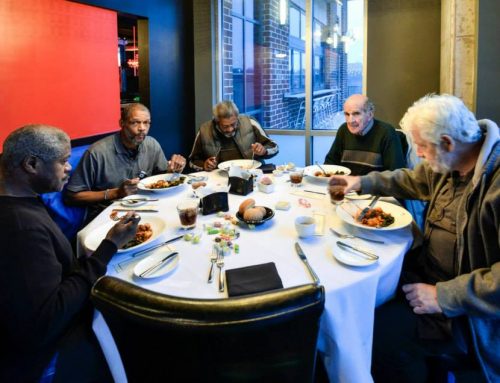Darlene Greene, 50, had heard, “I’m sorry, I won’t do it again,” countless times from her husband, but the abuse didn’t stop.
“I wanted to believe it because it was easier than starting over,” she said. “I was tired, scared and frustrated.”
It came to the point where her 15-year-old son was sleeping outside the couples’ bedroom door with a baseball bat and telling clergy he was going to kill her husband in his sleep. Greene’s sister, aunt and first cousin all lost their lives due to domestic violence, and she came within inches of following the same path.
She considers herself lucky to have survived that relationship and is thankful that her mom “didn’t have to bury another daughter.” She ended the abuse by going to the house of a friend her husband didn’t know about. If not for that haven, she could have ended up on the streets like many domestic violence victims, largely because her husband spent all the money she earned.
Studies and experts clearly show a strong correlation between domestic violence and homelessness. The National Resource Center on Domestic Violence examined the importance of domestic violence shelters, often the only refuge for abused women, by conducting a 24-hour census. Its study found that 64 percent of unmet requests from victims were for housing. Overall, 12.3 percent of the sheltered homeless population are domestic violence survivors, according to the U.S. Department of Housing and Urban Development’s 2010 annual homelessness assessment report.
Abused women often have to flee their residence and are at continued risk of economic and emotional abuse from their partner. Domestic violence shelters can often be lifesaving for victims, but budget cuts, overcrowding and limited resources present stark challenges for their future.
Fight and flight
Domestic violence is one of the primary causes of homelessness for women and children, said Anne Menard, executive director of the National Resource Center on Domestic Violence. Women often flee suddenly without a plan and find themselves in physical and economic trouble and without housing stability.
“People have to leave their existing home on an emergency basis to escape potential mayhem and possible death,” said Steve Berg, vice president for programs and policy at the National Alliance to End Homelessness. “People are running from violence, and that is the immediate cause of their homelessness.”
When people, primarily women, find themselves in an abusive relationship, they may not always have clear-cut choices, Menard said. One choice is to leave the abusive relationship and seek new housing, but this requires some financial stability and independence.
Many women are cut off from their friends or family or are afraid to seek shelter with them because the abusive partner can track them down more easily, Menard said.
“It’s important to realize how complex their choices are,” she said. “Abusers often isolate their partners, so many people may not have the social support network that we take for granted.”
This can create a vicious cycle. While many women become homeless due to violence, they will often encounter more trouble once on the streets. Women who are homeless are also at greater risk for other types of violence, including sexual assault, Menard said.
Greene encountered all types of violence and abuse, including physical and emotional, in her relationship that nearly took her life. One day her enraged husband threw her across the room and she nearly hit her head on the edge of their fireplace, which she believed would have killed her.
After that incident, Greene sought protection at a friend’s house that her husband did not know about. This way, he could not track her down or harm anyone else close to her. Greene encouraged women in similar situations to take this route, if it is available to them.






Leave A Comment